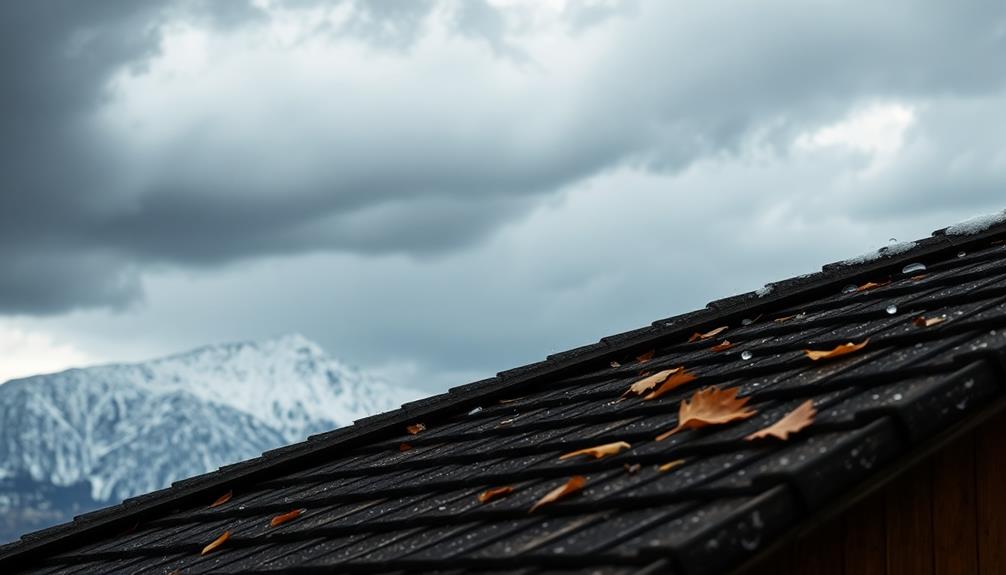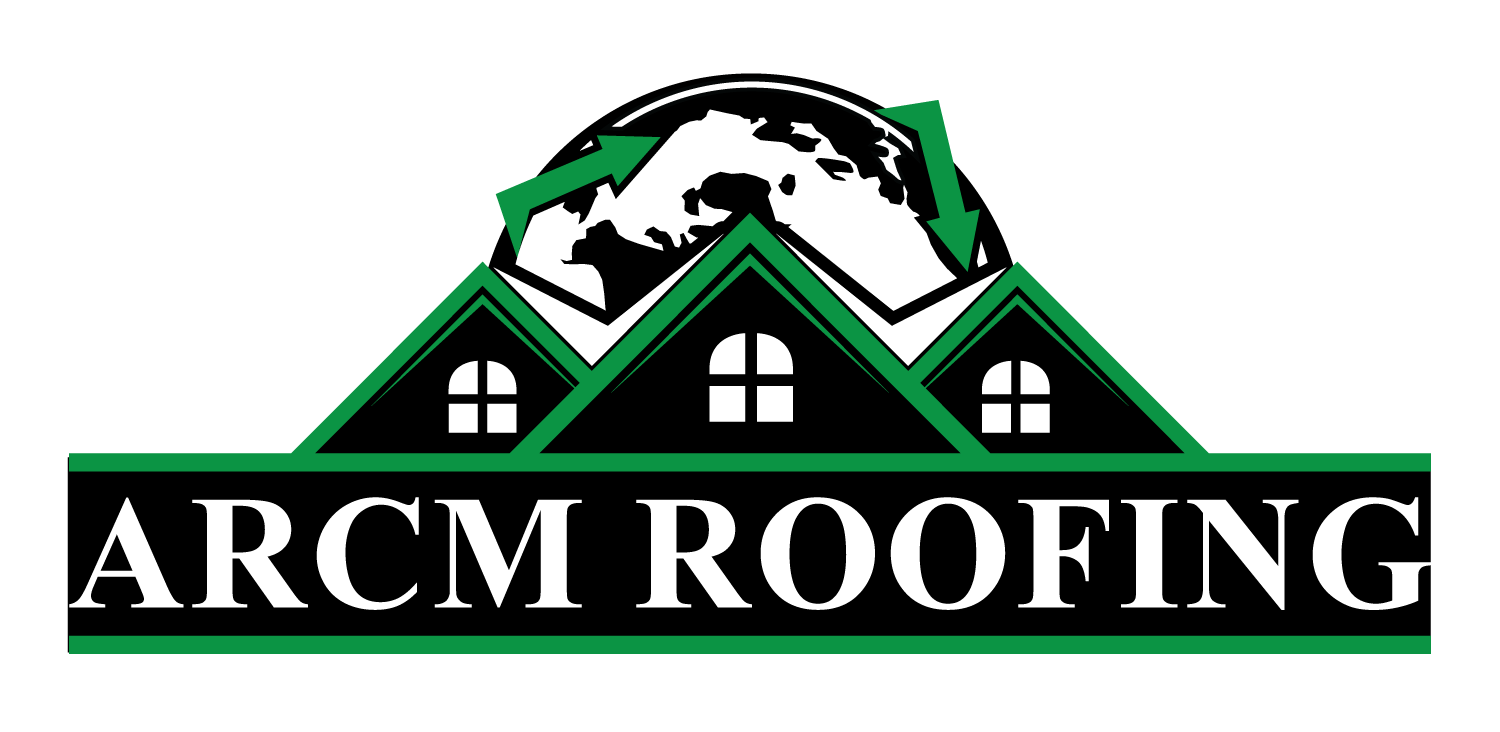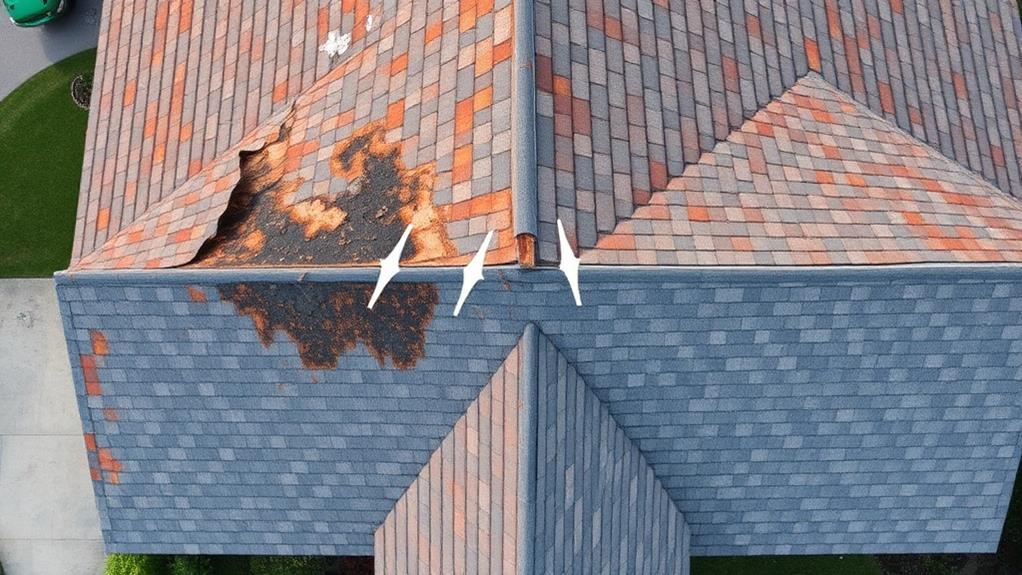When a roof displays clear signs of damage such as curling or missing shingles, persistent dampness, granules in gutters, or interior leaks, replacement is often necessary to safeguard the home’s structural integrity. Roof replacements not only address immediate deterioration but also enhance protection against weather elements, improve energy efficiency, and boost property aesthetics. Material choices range from affordable asphalt shingles, offering 15-30 years of service, to enduring slate and tile options, spanning 50-100 years, each bringing varied costs, durability, and installation demands. For those seeking more detailed insights into selecting the right material and understanding roof lifespan, further exploration is essential.
Roofing Highlights
- Look for curling or missing shingles and interior leaks to identify the need for roof replacement.
- Roof replacement ensures structural integrity and enhances protection against environmental elements.
- Consider new material options like asphalt, metal, tile, slate, or solar roof tiles for replacement.
- Asphalt shingles are affordable with a lifespan of 15-30 years, while metal lasts 40-70 years.
- Proactive maintenance inspections prevent severe damage and extend the roof’s lifespan.
Rooftop Overhaul Definition

A rooftop replacement, often necessitated by structural wear or aesthetic degradation, requires a thorough approach to guarantee long-term performance and protection, starting with the identification of key replacement indicators such as leaks, sagging, or significant material deterioration.
The purpose of a roof replacement extends beyond mere functional repair, aiming to enhance both the visual appeal and energy efficiency of a home, which emphasizes the importance of selecting appropriate roofing materials that align with environmental conditions and desired lifespan.
Purpose of Roof Replacement
To guarantee structural integrity and longevity, roof replacement serves as an essential aspect of home maintenance and improvement. Undertaking a roof replacement involves the complete removal of the old roof down to the clean deck, followed by the installation of new roofing materials. This process verifies that the integrity of the structure remains uncompromised by removing worn or damaged roofing materials that could lead to potential damage inside the house.
A new roof offers enhanced protection against the elements and increases the home’s aesthetic and market value, addressing the apparent Roof Needs.
The complexity of a roof replacement project necessitates the expertise of reputable roofing companies that can skillfully navigate the disorder that often accompanies such endeavors. The decision to repair or replace an old roof is pivotal, often requiring careful consideration of whether the current state truly necessitates a new roof.
Sourcing multiple quotes and selecting appropriate roofing materials are pivotal components of planning, highlighting the careful consideration required in these decisions. By emphasizing the importance of selecting a proficient local roofing company, homeowners can achieve a seamless roof replacement experience, aligning with their desire for a well-maintained and enduring home.
Identifying Replacement Indicators
Visible curling shingles and persistent damp spots can signal the urgent need for a roof replacement. For homeowners, understanding the importance of inspecting your roof periodically is indispensable. Signs of roof damage, such as missing shingles, granules in gutters, or interior leaks, indicate that a roof needs replacing.
By taking a thorough look at your roof’s condition, you can determine whether minor repairs suffice or if a full replacement is necessary. It is critical to recognize when your roof requires more than just patchwork; lofted shingles or deep stains could signify underlying structural issues demanding complete attention.
Roof replacement typically involves tearing off the existing roof down to the deck, which can be a substantial home improvement project but guarantees long-term safety and reliability. Opting for a full replacement over a basic nail-over installation can safeguard your home against future issues and align with professional recommendations.
Consulting multiple local roofing companies, with established reputations, for quotes is a wise approach to avoid unnecessary expenses. This assessment not only confirms the need to replace but assures clear understanding of possible roof damage, allowing owners to navigate the complex process of replacing the roof with confidence and assurance.
Choosing Roof Materials
When considering a roof replacement, selecting the appropriate material is crucial for both longevity and cost-effectiveness. As the majority of homeowners value the balance of durability and affordability, roofing materials such as Asphalt shingles emerge as a popular choice, providing a practical life span of 15-30 years. Their prevalence stems from their ability to offer a reliable new roof solution at a comparatively lower cost.
However, for those seeking greater longevity, Metal roofs prove an attractive alternative; though they entail a higher initial expense, their robustness is unmatched, lasting between 40 and 70 years—making them an investment in enduring protection.
Meanwhile, Tile roofs, crafted from clay or concrete, promise an impressive lifespan ranging from 50 to 100 years. Though they require specialized installation expertise, their timeless appeal guarantees a classic aesthetic.
For those pursuing elegance, Slate roofs present a premium choice with a lifespan comparable to tile but at a significant financial investment. In contrast, Solar roof tiles address sustainable living aspirations, merging energy efficiency with durable roofing; despite their high upfront costs and novel technology, they symbolize forward-thinking homeownership.
Each roofing option serves a unique purpose, offering homeowners diverse avenues to align their preferences with long-term goals.
Benefits

Undertaking a roof replacement offers homeowners numerous advantages including improved home value, enhanced energy efficiency, better weather protection, and increased longevity of the roofing structure. By opting for advanced materials and modern insulation techniques, a new roof not only curtails energy loss but also fortifies the home against elemental forces, thereby increasing its durability and lifespan.
Additionally, an updated roof elevates the aesthetic appeal and marketability of a property, presenting itself as a prudent investment for both current utility savings and future resale potential.
Improved Home Value
A considerable benefit of investing in a roof replacement is its potential to substantially enhance a home’s resale value, often by 15-20% on average. This increase is not merely a speculation but a reflection of buyer preferences. A new roof would provide immediate visual appeal and reassurance to prospective buyers, evidenced by such an impressive uptick in real estate worth.
It diminishes buyer concerns over maintenance, portraying the home as well-cared-for and less likely to masquerade underlying issues. Consequently, getting a new roof can be a prudent move that aids in securing a swift and lucrative sale.
Real estate professionals always recommend getting a new one if your current roof shows signs of aging. The choice of roofing materials can further refine this value increase; premium selections such as metal or tile are known to command higher prices in the market.
As the longevity of a roof lasts decades, the investment becomes more than just a superficial enhancement. If you find yourself pondering whether to replace your roof, know that replacing your roof is the right decision when considering long-term gains. Ultimately, this strategic improvement aligns perfectly with enhancing property value and marketability.
Enhanced Energy Efficiency
How can a roof replacement contribute to enhanced energy efficiency for your home? Opting for a new roof with improved energy efficiency can lead to a significant reduction in annual heating and cooling costs, potentially up to 15% compared to inadequate older structures. Roof replacements that incorporate modern materials and technologies, like metal or cool roofs, help reflect sunlight more effectively and reduce heat absorption. This shift in materials extends the life of your home’s thermal performance, fostering a sense of belonging in a community of environmentally conscious homeowners.
Selecting higher quality roof materials, such as asphalt shingle roofs known for their damage resistance and longevity, further increases energy efficiency. The improved insulation and reflective properties inherent in these materials help to elevate a home’s R-value. Consequently, this enhancement translates into considerable energy savings, ultimately compensating for the initial replacement expense over time.
Additionally, integrating proper ventilation and attic insulation can amplify these benefits, reducing HVAC energy use and contributing to a more comfortable living environment. Such thoughtful updates not only protect against future damage but also guarantee the lasting efficiency of your home’s ecosystem, securing both financial and ecological benefits for the homeowner.
Better Weather Protection
Beyond enhancing energy efficiency, a roof replacement also greatly bolsters weather protection for your home. The durability of improved roofing materials, such as asphalt shingles or metal, offers a fortified shield against rain, snow, and high winds. As older roofs succumb to wear and tear, they inevitably need to be replaced or continually repaired, compromising their ability to safeguard your home from the elements.
Choosing the best roofing materials can mitigate these vulnerabilities by providing a more robust and watertight barrier.
Roofing material advancements also address the challenge of common household hazards like ice dams and leaks. A high-quality roof replacement incorporates modern systems capable of effectively preventing these issues, consequently ensuring your home remains protected and dry. Additionally, incorporating proper roof vents during the roof installation not only enhances ventilation but prevents moisture intrusion—an often-overlooked factor contributing to weather-induced damage.
This strategic move in repairing or replacing your roof, when the need arises, guarantees improved resilience against adverse weather, fostering a safer, more secure environment for your family. Prioritizing reliable roofing systems assures long-term peace of mind and the security of your home, making it a wise investment in weather protection.
Increased Longevity
Endurance is a defining benefit of a quality roof replacement, considerably extending the lifespan of your home’s roof by 20-25 years or more, especially with proper maintenance. This longevity is often achieved through the integration of new materials, skillfully addressing weather-related vulnerabilities. By choosing a roof replaced with impact-resistant options, homeowners can safeguard against the rigors of harsh climates, thereby enhancing the roof’s life expectancy.
A roof can last far longer than initially anticipated when proactive steps, such as addressing ventilation and insulation, are undertaken during the replacement process. These improvements combat moisture damage and are essential in ensuring the repair a roof might need is minimal, ensuring your investment’s value endures.
Additionally, opting for energy-efficient materials not only conserves energy but imparts an increased roofs lifespan. These choices not only offer financial relief via reduced utility expenses but may also bolster a home’s resale value remarkably. A recently roof replaced presents an attractive proposition to potential buyers, upping market competitiveness. In sum, a quality roof replacement not only provides immediate practical benefits but solidifies the long-term investment in your home’s structural importance.
Seasonal Weather Impacts Roofs

Understanding the impact of changing seasons on roofing requires attention to both weather-induced damage and the need for seasonal maintenance. Each climate’s unique challenges, such as the harshness of winter snow or the intensity of summer storms, demand careful material selection to mitigate potential damage. The table below highlights the emotions homeowners often feel regarding roof impacts:
| Weather Condition | Homeowner Reaction |
|---|---|
| Winter Snow | Concern about weight |
| Summer Storms | Worry over damage |
| Spring Rains | Fear of leaks |
| Fall Winds | Anxiety about debris |
Weather-Related Roof Damage
Severe weather events can wreak havoc on roofing structures, often necessitating repairs or complete replacements. Particularly with old roofs, the toll of these events can considerably exacerbate wear and tear, resulting in damage to your roof that might require urgent attention.
The aging process of shingles is accelerated by high winds and hail, which can lead to fallen debris, missing shingles, and in some cases, tear off existing shingles entirely. Such visible signs of distress are clear indicators of a roof’s need for repairs or, in severe instances, total replacement.
Additionally, prolonged exposure to UV radiation from the sun contributes to shingles aging by making them brittle, causing them to crack and curl. These vulnerabilities open up pathways for moisture intrusion, particularly when compounded by poor attic ventilation, which accelerates the deterioration of roofing components.
This critical issue is intensified by excessive moisture, giving rise to mold and mildew. In colder months, ice dams and freeze-thaw cycles can lead to water backing up under shingles, inflicting hidden interior water damage. Such relentless cycles of expansion and contraction further compound existing problems and contribute to the premature aging of roofs, emphasizing the necessity for timely intervention.
Seasonal Roof Maintenance Tips
Maintaining your roof throughout the year calls for keen attention to the changing seasons and their unique impacts on roofing structures. Each season presents distinct challenges and demands that require diligent care and proactive management.
As winter’s chill descends, the weight of snow and ice can stress materials, creating a need for a professional to inspect your roofs for damage. Spring offers an opportunity to check for leaks and water damage, ensuring your roof remains watertight by addressing potential issues swiftly.
Summer in sunny climates can be harsh, with relentless heat causing expansion and contraction in roofing materials, leading to potential wear and tear. It’s pivotal to check for cracked or curling shingles and consider new shingles if necessary, while keeping in mind the variety of materials available that cater to different weather patterns.
Meanwhile, autumn brings falling leaves that, if left unchecked, can clog gutters and downspouts, necessitating proper cleaning to maintain efficient water flow.
In each season, the emphasis is on preventive care. Regular inspections and maintenance can extend the lifespan of your roof, offering peace of mind and fostering a sense of community responsibility through shared best practices in roofing care.
Climate Influences Material Choice
The choice of roofing material is heavily influenced by regional climate conditions, necessitating thoughtful consideration to guarantee long-term durability and effectiveness. This intricate decision-making process accounts for a lot of factors, such as temperature extremes, heavy rainfall, and frequent hail, which all dictate the lifespan and performance of roofing materials.
Homeowners residing in hot, sunny climates often lean towards cool roof shingles, designed to considerably reduce energy costs while maintaining curb appeal. In contrast, in regions where winters are harsh, materials that resist snow accumulation and prevent ice dams are indispensable to maintaining a roof that is several years old.
Coastal areas face unique challenges; the high winds and salt air exposure can deteriorate standard asphalt shingles swiftly, making metal or impact-resistant roofing an ideal choice. Moreover, environments abundant in tree coverage and subject to falling debris necessitate more durable options like slate or concrete tiles.
Consulting a reputable roofer is highly recommended when replacing an old roof to prioritize these climate-specific conditions. Such foresight in material selection not only extends the roof’s life but also elevates a home’s overall value and belonging within its environment.
Roofing FAQ
How Often Should a Roof Be Inspected for Potential Issues?
To guarantee a well-maintained roof, annual inspections are advisable, ideally conducted twice yearly in spring and fall. Complement these with professional evaluations every 3-5 years, and always inspect following severe weather events to identify potential damage.
What Signs Indicate It’s Time to Replace Roofing Materials?
Key indicators for replacing roofing materials include persistent leaks, extensive damage from storms, curling or missing shingles, and substantial moss or algae growth. Professional assessment guarantees members of our community maintain safe, aesthetically pleasing, and durable roofing solutions.
How Long Does a Typical Roof Replacement Take to Complete?
A typical roof replacement for an average-sized home usually takes 1-2 days. Project duration may vary due to factors such as material type, roof size, complexity, and weather. Thorough planning and contractor coordination are essential for minimizing disruptions.
Are There Environmentally-Friendly Roofing Material Options?
Environmentally-friendly roofing materials include metal roofs, solar roof tiles, slate, clay and concrete tiles, and recycled plastic and rubber composite shingles. Each offers sustainability by utilizing recyclable components and minimizing environmental impact while ensuring durability and performance.
Can Insurance Cover the Cost of Roof Replacement?
Yes, insurance may cover roof replacement costs, provided the damage is due to a covered event. Coverage depends on policy details, such as deductibles and depreciation schedules. Maintaining documentation of roof condition is imperative for successful claims.

